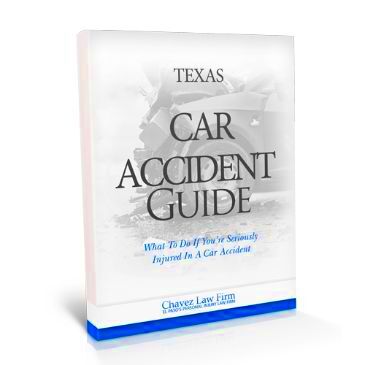Texas Auto Accident Laws and Your Legal Options
Texas auto accident laws can be complicated, especially if you’re not familiar with the legal system. Whether you’re dealing with insurance companies or trying to figure out who’s at fault, knowing the basics of these laws can make the process much easier. Texas follows a “fault” system, meaning the person responsible for the accident pays for the damages.
It’s important to understand your rights and responsibilities after an accident. By knowing how the law works, you can protect yourself from being held unfairly responsible for someone else’s mistakes.
What to Do Immediately After an Auto Accident

Immediately after a car accident, the actions you take can have a huge impact on your health, safety, and legal case. Follow these steps to ensure you’re protected:
- Check for injuries: Make sure everyone is safe, and seek medical help if needed.
- Move to safety: If possible, move your car out of traffic to avoid further accidents.
- Call the police: A police report is crucial for insurance claims and legal proceedings.
- Exchange information: Get contact, insurance, and vehicle details from the other driver(s).
- Document the scene: Take photos of the vehicles, road conditions, and any visible injuries.
- Do not admit fault: Stick to the facts when talking to police and the other driver.
Following these steps can help you stay safe and ensure you have the information you need for any insurance or legal claims that may arise.
Determining Fault in Texas Car Accidents

In Texas, determining fault is a key factor in how damages are paid out. Texas is a “fault” state, which means the driver responsible for the accident must cover the costs of the damages. This is often determined by the police report, witness statements, and evidence like photos or traffic camera footage.
The state also follows a system called “modified comparative negligence.” If you are found to be partially at fault, your compensation could be reduced by the percentage of your fault. For example, if you’re 20% at fault, your compensation will be reduced by 20%. However, if you’re more than 50% at fault, you may not be eligible for any compensation at all.
This makes gathering strong evidence and working with a lawyer essential if you want to build a solid case for yourself.
Insurance Requirements and Coverage in Texas
In Texas, drivers are required by law to carry a minimum amount of liability insurance to cover damages they may cause in an accident. This helps ensure that victims of accidents can receive compensation for their injuries and property damage. However, these minimums might not be enough, so it’s important to know what’s required and consider getting additional coverage.
The minimum insurance requirements in Texas are often referred to as “30/60/25” coverage, which means:
- $30,000 for injuries per person
- $60,000 total for injuries per accident
- $25,000 for property damage
In addition to liability coverage, Texas drivers may also opt for additional types of insurance, such as:
- Uninsured/Underinsured Motorist Coverage: Protects you if the other driver doesn’t have enough insurance.
- Personal Injury Protection (PIP): Covers medical expenses and lost wages, regardless of who was at fault.
- Comprehensive and Collision Coverage: Helps repair or replace your vehicle after an accident, theft, or other damages.
Understanding your insurance options and having adequate coverage can provide peace of mind and protect you financially in the event of an accident.
The Role of Comparative Negligence in Texas
Texas follows a “modified comparative negligence” rule when it comes to car accidents. This rule determines how compensation is awarded when more than one party is at fault. In simple terms, each party’s responsibility is measured by a percentage, and compensation is adjusted accordingly.
Here’s how it works:
- If you’re found to be less than 50% at fault, you can still recover damages. However, your compensation will be reduced by your percentage of fault.
- If you’re 50% or more at fault, you won’t be able to recover any compensation from the other party.
For example, if the total damages from the accident are $100,000 and you’re found to be 30% at fault, you would be entitled to $70,000. But if you’re found to be 60% at fault, you wouldn’t receive any compensation.
This system ensures that fault is fairly distributed, but it also makes it important to have strong evidence to minimize your percentage of fault. Having an experienced attorney can help you navigate this rule and ensure you get the compensation you’re entitled to.
Legal Options for Seeking Compensation
If you’ve been in a car accident in Texas and someone else is at fault, you have several legal options for seeking compensation. The first step is usually filing a claim with the at-fault driver’s insurance company. However, if the insurance company does not offer a fair settlement, you may need to explore other legal avenues.
Here are your primary options for seeking compensation:
- Filing an insurance claim: This is typically the first step, where you negotiate with the other driver’s insurance company for compensation.
- Negotiating a settlement: Sometimes, a settlement can be reached outside of court, avoiding a lengthy trial.
- Filing a lawsuit: If a settlement isn’t possible, you may need to file a personal injury lawsuit to seek damages for medical bills, lost wages, and pain and suffering.
- Small claims court: If the amount you’re seeking is below a certain threshold (usually $10,000 in Texas), you may take your case to small claims court, which is simpler and quicker than a full lawsuit.
It’s important to act quickly since Texas has a statute of limitations for filing a lawsuit, typically two years from the date of the accident. An attorney can help you choose the best path and ensure you meet all legal deadlines.
Steps to Take When Filing a Lawsuit
If negotiations with the insurance company fail or you’re unable to reach a fair settlement, filing a lawsuit might be your best option. The legal process can seem overwhelming, but knowing the steps can help you prepare for what’s ahead.
Here are the key steps to take when filing a lawsuit after a car accident in Texas:
- Consult with a lawyer: It’s crucial to speak with a personal injury attorney who can assess your case and guide you through the process.
- File a complaint: Your lawyer will file a formal complaint in court, outlining the details of the accident and why you are seeking compensation.
- Serve the defendant: The person you’re suing (the defendant) must be formally notified of the lawsuit. This is typically done through a legal process called “service of process.”
- Discovery phase: Both sides exchange evidence, documents, and information related to the case. This can include witness statements, medical records, and accident reports.
- Pre-trial negotiations: Before going to trial, the parties often attempt to settle the case through negotiations or mediation. Many cases are resolved at this stage.
- Trial: If no settlement is reached, the case goes to trial, where a judge or jury will determine fault and award compensation.
Filing a lawsuit can take time, but it may be the only way to receive fair compensation. Working with a skilled attorney can improve your chances of success.
How a Lawyer Can Help With Your Case
Handling a car accident case on your own can be stressful and confusing. A lawyer experienced in Texas auto accident cases can provide valuable assistance from start to finish. They can help you understand your rights, gather evidence, and negotiate with insurance companies.
Here’s how a lawyer can assist you:
- Evaluating your case: A lawyer can assess the strength of your case and determine whether pursuing legal action is worth it.
- Gathering evidence: Lawyers know what evidence is necessary to build a strong case, such as police reports, medical records, and witness statements.
- Handling negotiations: Experienced attorneys can negotiate with insurance companies to get you the best possible settlement. They know how to counter lowball offers and protect your interests.
- Filing legal documents: Legal paperwork can be complicated, but a lawyer will ensure all documents are filed correctly and on time.
- Representing you in court: If your case goes to trial, a lawyer will represent you, present evidence, and argue on your behalf to ensure you get the compensation you deserve.
Having a lawyer by your side can make a significant difference in the outcome of your case. They can handle the complexities while you focus on recovering.
Frequently Asked Questions
Here are some common questions people have about Texas auto accidents and legal options:
| Question | Answer |
|---|---|
| What is the statute of limitations for filing a lawsuit in Texas? | You generally have two years from the date of the accident to file a personal injury lawsuit in Texas. |
| Do I need a lawyer to file a lawsuit? | While it’s not legally required, having a lawyer can greatly improve your chances of success, especially when dealing with complex legal issues. |
| What if the other driver doesn’t have insurance? | You may still be able to recover damages through your own uninsured/underinsured motorist coverage or by filing a lawsuit. |
| How long does it take to settle a car accident lawsuit? | It varies. Some cases are settled in a few months, while others can take a year or more, especially if they go to trial. |
Conclusion: Protecting Your Rights After a Car Accident
After a car accident, understanding Texas auto accident laws and taking the right steps can significantly impact your ability to recover compensation. Whether it’s dealing with insurance companies, determining fault, or considering legal action, being informed is key to protecting your rights. Hiring a lawyer can greatly help in navigating the complexities of the legal system and ensuring that you get the compensation you deserve. Acting quickly and following the correct legal procedures will put you in the best position to protect your rights and recover from the accident.


